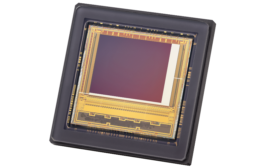Home » imaging
Articles Tagged with ''imaging''
Vision & Sensors | Optics
Choosing the right optical setup is critical to minimizing errors and ensuring that dimensional measurements are repeatable and reliable.
Read More
Vision & Sensors | Cameras
How RGB-IR Cameras Are Transforming Medical Imaging
Modern medical imaging systems can leverage the strengths of both spectra, leading to improved diagnostic capabilities and superior imaging across various medical use cases.
April 1, 2025
NDT | Aerospace
Neutron Imaging Advances Aerospace Valve Inspection Capabilities
The complexity of modern aerospace valves creates a particular challenge for traditional inspection methods.
January 2, 2025
Vision & Sensors | Trends
Innovations Shaping the Future of Contact Image Sensor Technology
High speed, resolution, and dynamic range imaging with true metrology in a compact design
November 26, 2024
Vision & Sensors | Trends
Eliminate Distortion in Wide Angle Imaging for Machine Vision Applications
Modern vision systems need high performance, wide angle lenses that can display high resolution images of large areas in real time.
November 25, 2024
New Product
MidOpt SiLWIR Silicon Protective Windows for Industrial Imaging
October 6, 2024
Vision & Sensors | Trends
Machine Vision Technologies Adapt for Higher Speeds, Evolving Needs
From the warehouse to the food production line, today’s high-speed imaging applications require more than just faster cameras.
June 3, 2024
Vision & Sensors | Lenses
Understanding the Key Factors in Microscope Objective Performance
February 6, 2024
Stay in the know with Quality’s comprehensive coverage of
the manufacturing and metrology industries.
eNewsletter | Website | eMagazine
JOIN TODAY!Copyright ©2025. All Rights Reserved BNP Media.
Design, CMS, Hosting & Web Development :: ePublishing









